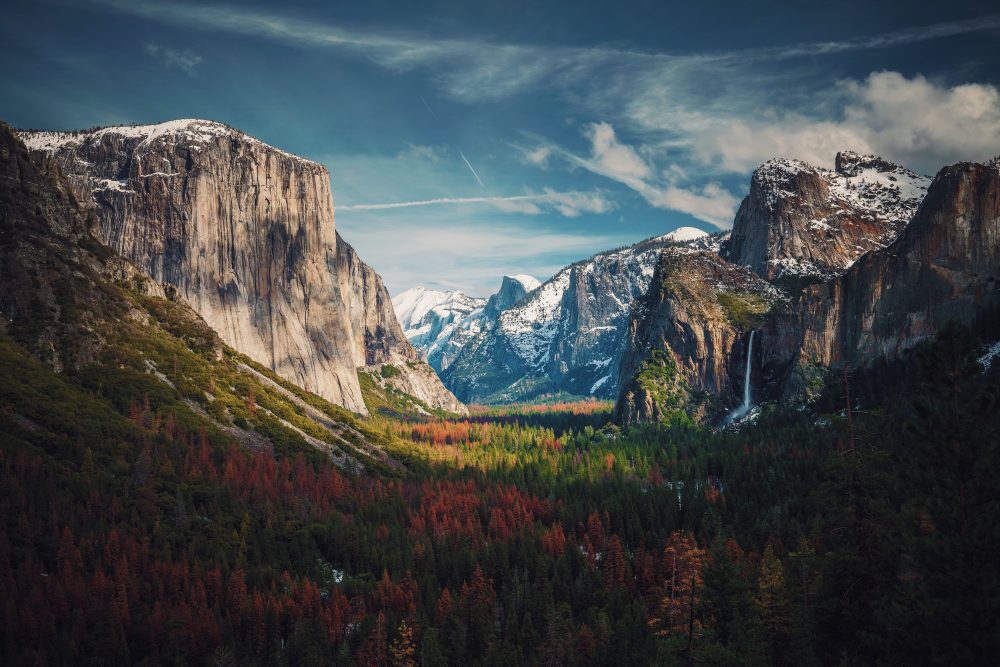Looking for a paradise on earth? Look no further than Yosemite National ark! This breathtaking destination has been enchanting visitors with its stunning natural beauty for over a century. With towering waterfalls, majestic mountains, and lush forests teeming with wildlife, it’s no wonder that Yosemite is one of the most beloved national parks in America. Whether you’re an adventure seeker or simply looking to escape into nature, there’s something here for everyone. Join us as we take a visual journey through this incredible wilderness and discover all that Yosemite has to offer!
The History of Yosemite National Park
Yosemite National Park has a rich and fascinating history that dates back thousands of years. The region was first inhabited by Native American tribes, including the Ahwahneechee and Miwok people, who lived in harmony with the natural environment. In 1851, European settlers arrived in Yosemite Valley and began to exploit its resources for commercial gain.
In response to this destruction, conservationists such as John Muir fought to protect the park’s pristine wilderness from development. Their efforts culminated in the establishment of Yosemite National Park on October 1st, 1890 – making it one of America’s first national parks.
Over time, Yosemite has become a symbol of environmental preservation and an inspiration for artists such as Ansel Adams. Today, millions of visitors flock to this awe-inspiring landscape every year to witness its beauty firsthand.
The Geography of Yosemite National Park
Yosemite National Park is located in the Sierra Nevada mountains of California and spans over 1,200 square miles. The park has a diverse range of geographic features that are truly awe-inspiring.
One of the most iconic features of Yosemite is its granite cliffs, such as Half Dome and El Capitan. These towering rock formations were formed by millions of years of erosion from glaciers and rivers.
The park also boasts several waterfalls, including the famous Yosemite Falls which towers at 2,425 feet tall. The waterfalls are fed by snowmelt from the surrounding mountains during spring and early summer months.
In addition to its stunning rock formations and waterfalls, Yosemite is home to three groves of giant sequoia trees – some of the largest living organisms on Earth. The Mariposa Grove alone contains over 500 mature sequoias!
The park’s geography also includes meadows filled with wildflowers in the springtime, alpine lakes surrounded by pine forests, and even hot springs along its eastern border.
Yosemite National Park’s geography offers a unique blend of natural wonders that make it one-of-a-kind destination for visitors seeking adventure or tranquility amidst breathtaking landscapes.
The Plants and Animals of Yosemite National Park
Yosemite National Park is home to an incredible diversity of plant and animal life. From towering sequoias to elusive mountain lions, this park has something for everyone who loves nature.
The flora in Yosemite can vary depending on the elevation. In the lowlands, visitors can find oak trees, grassy meadows, and chaparral scrublands while the high country offers alpine tundra with wildflowers like lupine and Indian paintbrush. The park is also known for its giant sequoia trees which are some of the largest living organisms on earth.
The wildlife in Yosemite is equally impressive, with over 400 species calling it their home. The iconic black bears roam throughout the park’s forests while other notable mammals include coyotes, bobcats, mule deer and bighorn sheep that wander through rugged backcountry terrain.
Birdwatchers will delight in spotting more than 250 bird species such as bald eagles soaring above granite peaks or California Condors cruising along canyon walls. At nightfall when darkness falls across this natural wonderland creatures like spotted owls emerge from their dens to hunt prey under a starry sky.
In short, exploring Yosemite National Park means immersing oneself into one of North America’s most biodiverse ecosystems where every turn leads to new adventure opportunities- whether hiking deep into wilderness areas or simply sitting quietly beside a clear stream observing native trout swimming by!
The Best Time to Visit Yosemite National Park
Yosemite National Park is a year-round destination, but the best time to visit depends on what you want to do and see. Summer is undoubtedly the busiest season with long days, warm temperatures, and plenty of outdoor activities. However, it’s also the most crowded time with millions of visitors flocking in from all over the world.
If you prefer fewer crowds and cooler weather, spring or fall may be your best bet. The park comes alive in spring as wildflowers bloom and waterfalls are at their peak flow. Fall brings stunning foliage colors and fewer tourists.
Winter is another unique time to experience Yosemite National Park when snow blankets everything creating a winter wonderland that transforms the landscape into something magical. Many roads close during this period, but there are still plenty of activities like skiing or snowshoeing available.
Regardless of when you decide to visit Yosemite National Park, always check weather conditions before traveling as they can change rapidly even in summer months.
Things to Do in Yosemite National Park
Yosemite National Park offers a wide range of activities for visitors. From hiking and rock climbing to fishing and birdwatching, there is something for everyone.
One of the most popular things to do in Yosemite is hiking. With over 800 miles of trails, visitors can explore waterfalls, meadows, and stunning vistas. The Mist Trail to Vernal Falls is a must-do hike with spectacular views.
For those who prefer more adrenaline-fueled activities, rock climbing in Yosemite Valley will not disappoint. With towering granite walls like El Capitan and Half Dome, it’s no wonder why this park draws climbers from all over the world.
Fishing is also a favorite activity among visitors with several rivers and streams that are home to various species such as rainbow trout and brown trout. Fishing licenses are required so make sure you obtain one before casting your line.
If you’re looking for a more relaxing experience in nature, then consider wildlife watching or simply taking a scenic drive through the park’s winding roads where you might spot animals like black bears or coyotes along the way.
Stargazing at night provides an incredible view of stars due to its dark skies away from city light pollution. Just don’t forget your telescope!
Yosemite National Park Lodging
Yosemite National Park is a natural wonder that draws millions of visitors every year. With its stunning landscapes, diverse wildlife, and endless outdoor activities, it’s no surprise why so many people flock to this paradise on earth.
If you’re planning a trip to Yosemite National Park, finding the perfect lodging can make all the difference in your experience. Fortunately, there are plenty of options available for every type of traveler. From camping and RV sites to cabins and lodges, you’ll find something that fits your needs.
If you want to stay inside the park itself, there are several campgrounds with tent sites as well as RV hookups. There are also numerous lodges and cabins available for those who prefer more comfortable accommodations. One popular option is The Ahwahnee Hotel (now called The Majestic Yosemite Hotel), which features luxurious rooms with incredible views of the valley.
For those who prefer to stay outside the park gates, nearby towns such as Mariposa and Oakhurst offer plenty of hotels/motels along with vacation rentals like Airbnb or Vrbo.
No matter where you choose to stay during your visit to Yosemite National Park, one thing is certain: You’re guaranteed an unforgettable experience filled with breathtaking scenery and adventure at every turn.








